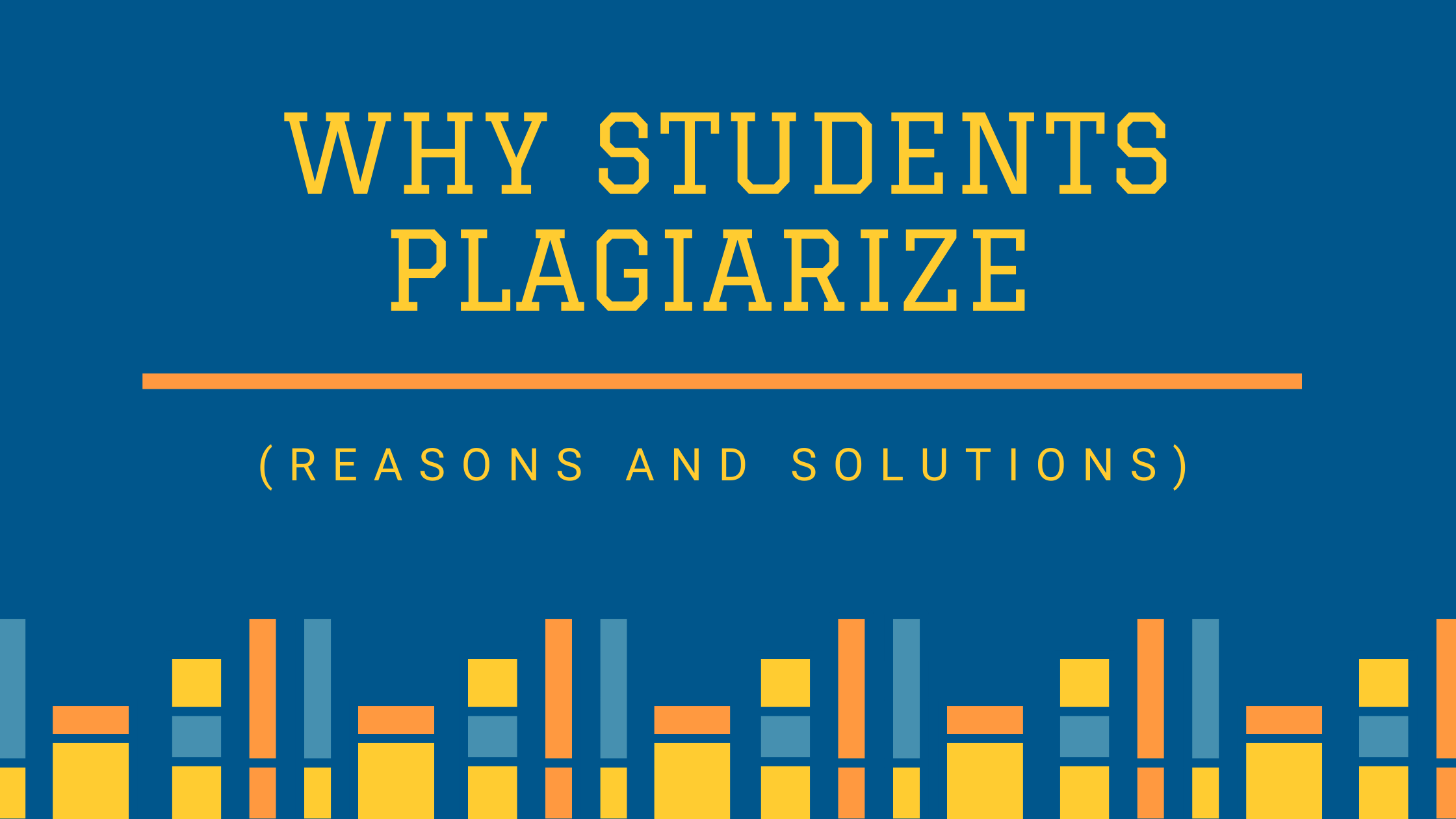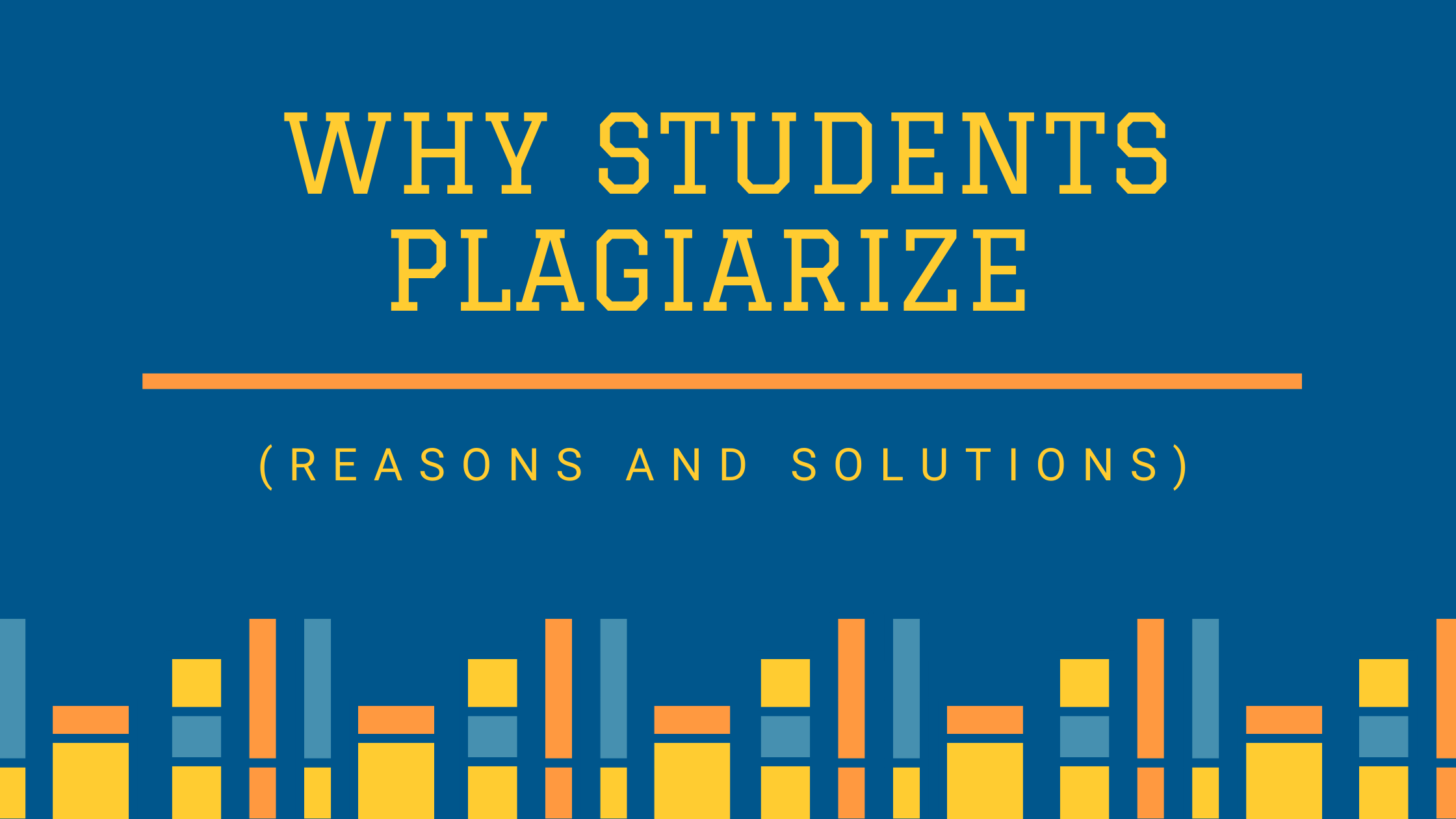Why do you think some students plagiarize?
Why do they plagiarize assignments, research papers, and homework?
If you are a student, please remember that plagiarism is an act of academic dishonestly, educational misconduct and is an unethical activity with far-reaching negative consequences.
If you are a teacher, it is very important you detect any instances of plagiarism quickly to avoid recurrence of such events and keep the quality of academic integrity.
If your students are plagiarizing regularly, it may be an indication your teaching has fallen short or there is something wrong (which needs urgent fix)
Oftentimes, knowing what causes an inconvenient development could help find an actionable solution. This is why we prepared this article where the focus will be to identify the underlying the causes of plagiarism in the classroom and how to prevent students from knowingly or unknowingly plagiarize work of art.

Content
- What is plagiarism?
- What are the different types of plagiarism by students?
- Why students plagiarize (Possible reasons and solutions)
- Conclusion
What is plagiarism
First, let us know the definition of student plagiarism
Plagiarism is the act of presenting someone else’s work or ideas as your own without giving them the due credit. According to YourDictionary plagiarism is ” Copying or stealing someone else’s words or ideas and claiming or presenting them as if they were your own”.
An example of plagiarism is when you copy a paper from the Internet, put your name on it and turn it in as if you wrote it.
An example of plagiarism is when you buy a term paper or essay written by someone else and attempt to use it as your own.
An example of plagiarism is paraphrasing materials without correctly attributing the source or research text.
Source: Your dictionary
What are the different types of plagiarism by students?
Plagiarism could be done intentionally, unintentionally or recklessly. Generally speaking, the concept of plagiarism is difficult to explain and it doesn’t have one unified, all-encompassing definition. This is because plagiarism could be the outcome of different, often untreated actions.
It could range from failing to follow established scholarly procedures for source attribution, using someone’s work without an explicit cheating intent or reckless wholesale theft of an already existing work.
Although plagiarism is an academic misconduct which badly impacts the quality of education with far reaching future outcomes, knowing why or what prompts a student to unknowingly or knowingly reproduce existing work improperly is an interesting and important thing to examine.
Causes of student plagiarism
Failing to fully believe in one’s potential/ finding their voice in someone’s else’s words
Unconfident students; means students who lack confidence and are always doubtful about the quality of their work may knowingly or unknowingly reproduce work because –
1) They find their voice in that work
2) They think the original content creator is much experienced and has better and credible information
Solution
Teachers should promote individual work, and inspire students to gather confidence and identify ways to cultivate active learning, listening and writing skills.
Lack of proper research skills
One thing directly tied with plagiarism is a student’s lack of ability (in many cases lack of guidance) to gather library catalogue, attribute proper library sources, and navigating between the journal content.
Solution
Instructional session classes and reference services that educate students to properly search and attribute library sources can eliminate this issue.
Inability to evaluate content sources online
Today as we have literally anything available at the click of a mouse, students can find their desired information quickly, saving them of time, money and effort. But Internet content does not have any self regulations, and there’s hardly any quality control process in place. It’s easy to copy content and paste it as your own. In some instances, it’s also hard for a teacher to identify the source content. This makes things even worse.
Solution
To eliminate such issues, schools and colleges should have a guiding system that trains students where to look for info online, and how to adequately attribute sources to stop them from getting caught in the web of plagiarism.
Plagiarism vs paraphrasing
Plagiarism, as discussed, is reproducing someone else’s work without any changes and presenting as if it belongs to you.
Paraphrasing is rephrasing an existing work in your own words. It’s the act of rewording content in a way that will pass throigh a plagiarism checker tool as clean, original document.
Paraphrasing also needs to be done properly, and should be cited when and where needed.
Solution
Teachers, based on their academic priorities and established institutional norms, should clearly educate students about the differences between plagiarized content and paraphrased content.
Uninformed note taking
Note taking when dine wrongly can lead to plagiarism.
Now what is wrong note taking?
It ‘s the act of quickly jotting down notes without paying attention to the minute details such as the source content. This may be for a number of reasons, including wrong teaching.
Careless, reckless note taking lead to the mix up of paraphrased content and quoted content. At a later date, when the student sit down to organize content, s/he may forget the source of a citation, forget which material s/he originally composed based on the lectures , and forget the source of quoted text to be put into the classroom paper.
Solution
To reduce careless note taking from happening, students should actively engage with lectures, and most importantly teachers should be responsible for making note taking an effective, effortless and fun activity. They should follow clear, simpler patterns and give enough time for students to gather concepts and write down information.
Why would a student plagiarize – Other reasons
- Failure to distinguish between terms, including complex technical terms
- Not fearing the consequences because those who plagiarized were not caught in the act and afterwards. They have seen students who plagiarized get away with nothing
- Many times students attend class, pursue a degree only because they have to pass it. Not liking the subject, and learning to earn a degree often make them commit academic offence such as plagiarism
- The lack of organizational and time management skill can make them feel pressured when dealing with the expectations of producing large and highly demanding research paper
- The concept of owned content is not mainstream in many placed. A useful content is considered inclusive and available for public use
- Teachers may convey non sufficient concept or present unrelated academic content. As a reason, students may be prompted to look elsewhere for more resources
- Failure from the part of educational institutes to enforce penalties and check this academic misconduct can encourage students to indulge in repeat offences
- A student who has missed a class and need to submit a paper urgently may stop to the unethical activity of plagiarism
- The students don’t know that the importance of properly citing sources, and valuing others’work
What teachers can do to stop students from plagiarizing –
Teachers have a key role to play when it comes to conveying why students should avoid plagiarism. Actions depend on individual analysis, institutional situations, and decisions of key authorities, but these are few ways plagiarism can be controlled, perhaps when done effectively.
- Educate students about the affect of plagiarism
- Develop a guiding system inside your institute that specifically addresses all things related with plagiarism
- Make plagiarism harder by covering content on topics that do not have enough publicly available reading material
- Make students properly connected with the content, follow thoughtful, engaging teaching patterns
- Invest in tools and resources to detect plagiarism and once someone is caught copying material – either intentionally or unintentionally – guide them rather than insulting openly
- A close ‘eager to learn’ student-‘happy to teach and skilled’ teacher and ‘curious’ student-‘good’ in house study material connection can easily disconnect student-plagiarism connection
Conclusion
The main point is to understand the reasons why a student plagiarizes, why it is happening in your institute and then thoughtfully addressing each issue with practical, actionable steps that –
Promote student confidence, Create a fun and engaging learning culture inside the classroom, and prompt students to produce original high quality work.
References –
- Top 10 reasons students plagiarize & what teachers can do about it (with apologies to David Letterman)
- Why students plagiarize

2 thoughts on “Why students plagiarize (Reasons and Solutions)”